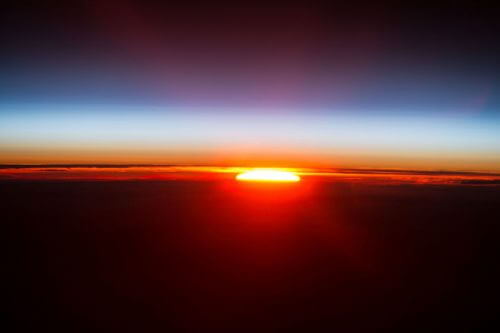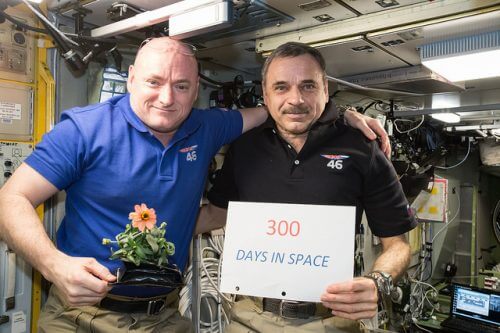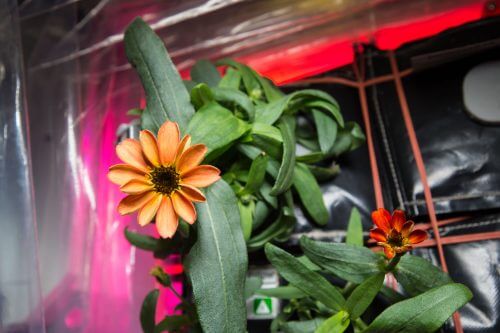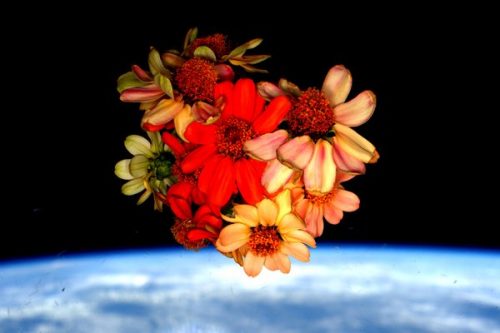Today, Wednesday, 2/3/16, Scott Kelly and Mikhail Kurinenko are returning to Earth after almost a year in space. Elisef Kosman summarizes the achievements of the operation

How can you watch 10,000 sunrises and sunsets in one year? The answer is simple - to live one year on the International Space Station. An astronaut who is on the station for a year sees 16 sunrises and 16 sunsets in one day, this is because the station, which moves at an altitude of about 450 km above the surface of the earth, completes one revolution around it every 90 minutes. This was exactly the mission of the American astronaut Scott Kelly and the Russian cosmonaut Mikhail Kornienko - to spend a year in space, to examine the effects of a long stay in space on astronauts. Now, the two are finishing their joint mission, which lasted, to be precise, 340 days.
This is not the first time that astronauts have spent such a long time in space. The Russians already accomplished this feat when cosmonaut Valery Poliakov spent 438 consecutive days aboard the Mir space station (predecessor to the International Space Station) between 1994 and 1995. However, this is the first time that a mission was originally designed to test the effects of a long stay in space on astronauts.

A long step for Scott Kelly, an important step on the way to Mars
The Russians may not attach great importance to this mission, but NASA certainly does. She presents it as one more step towards landing a man on Mars in about 20 years, in the late 30s. The American agency calls it the "Journey to Mars", which requires the completion of many small steps before it is possible to take the big step in which a person will land on Mars.
The current mission will contribute to this "journey" by providing a lot of information about the health and psychological effects of a long stay in space, which will be an integral part of a manned mission to Mars. Such a mission could take three whole years, due to the great distance of Mars from Earth.
A long stay in space involves a large number of factors that may harm the health of the astronauts or their functioning. The lack of weight they experience causes changes in their bodies, such as a change in the movement of fluids in the body that may cause vision problems, and damage to the bones that thin out because they do not experience more load, in a way reminiscent of osteoporosis. In space, above the atmosphere that protects them, the astronauts are exposed to large amounts of radiation. Astronauts on the space station are still shielded from much cosmic radiation by Earth's magnetic field, but astronauts launched to Mars will experience even greater amounts of radiation.
Psychologically, the isolation and hostile mechanical environment in which the astronauts find themselves can affect their conduct and functioning both individually and as a team. The astronauts will also have to learn to function independently in emergency situations, because at the distance at which Mars is located, communication between them and the control center on Earth cannot be carried out in real time - signals sent from one side will take about 12 minutes, on average, to reach the other side.
To address these challenges, researchers must better understand how space affects astronauts. One of the methods that will make this possible is the "twin study", which will compare Scott Kelly and his identical twin Mark Kelly, who also previously served as an astronaut, and this time remained on Earth to serve as a "control group" for his brother.
In addition, before the start of the mission, during and after it, Kelly and Kornienko underwent and will undergo various medical tests and gave blood, urine and saliva samples, in order to carefully examine their health status for future research. Other studies will also examine the psychological effects of space on them. Among other things, the researchers will "take a look" at a personal diary that the astronauts write in order to understand the problems they experience, which may not have even occurred to those who have not experienced space themselves.

Save the flowers of the station
One of the interesting tasks assigned to Kelly during his year in space was to take care of and nurture the plants grown in the "Vegee" experimental system that was launched to the station in 2014. Kelly and his station partners ate lettuce grown in this system for the first time during August of last year. The plants grow in it inside cushions where a special growing medium has been inserted, and on top of them are installed LED lights that imitate the action of the sun's rays.
The technology of growing plants in space is also important for the mission to Mars, because plants can remove carbon dioxide from the air that the astronauts breathe, provide them with some fresh food instead of dried food in vacuum bags, and also serve as a hobby that will make the long journey a little easier for them.
In light of the success of growing lettuce, the researchers decided to move to a more advanced stage of the experiment, where they grew zinnia plants, a type of sunflower, in the experimental system, and this was to test for the first time the growth of flowers at the station, towards more advanced stages of growing fruits and vegetables, such as tomatoes.
But when the zinnia plants began to wither, Scott Kelly took command of the experiment and saved them. Until then, he followed the instructions of the researchers sitting on the ground: he cut the dead parts of the plants and increased the power of the system's fan to lower the humidity around the plants. However, when he asked to water them because he thought they needed water, the researchers on the ground told him that the time for watering had not yet come. Kelly insisted and claimed that as someone who takes care of the plants and sees them with his own eyes, he should make the decision. The researchers of the experiment decided to accept his approach, and were content only with guidance on how to treat the plants. It seems that the method worked very well, because a short time later the surviving plants began to bloom. Kelly picked them up on February 14th in honor of Valentine's Day.

The work is hard, but you can also have fun
Kelly plays with a fresh supply of fruit that arrived aboard the Japanese cargo spacecraft Konotori in 2015. Source: NASA.
During his long stay in space, Kelly participated in the performance of 400 different experiments on the station, and performed three spacewalks as part of the regular maintenance of the station, this is in addition to the many exercises that the astronauts on the station are required to perform every day to maintain the density of their bones, which thin out and weaken in the weightless conditions of space.
Kelly showed that you can also have fun with this long task. He used the little personal luggage that he is allowed to bring to the station (taking into account that launching one kilogram into space costs about ten thousand dollars), to put on a costume and shoot the following video:
He is also very active on social networks. On his Twitter account, he uploaded spectacular pictures of the Earth every day and managed to gain over 900 followers.
With the end of the mission on March 1 (March 2 at six in the morning Israel time), Kelly, along with his Russian partners Mikhail Kornienko and Sergey Volkov, will be squeezed into the Soyuz spacecraft docked at the station. The spacecraft will detach from the station and after entering the atmosphere will land in Kazakhstan. After they leave the station, three astronauts will leave it, and about two weeks later they will be joined by three more who will also be launched using a Soyuz spacecraft.
But as far as Kelly is concerned, the task will not be over yet. In fact, immediately after landing, he will have to carry out various types of training, with the aim of testing the ability of astronauts to function after a long stay in space, something that will be essential in a manned mission to Mars or back to Earth by the "Orion" spacecraft, a spacecraft that NASA is currently developing . It will land on the sea and not on land like the Soyuz, so the astronauts will be required to get out of the spaceship on their own after the "splash down" and wait for the marine rescue forces, as the Apollo program astronauts did about fifty years ago.
More on the subject on the science website
For the news about the launch of the two to the space station a year ago

2 תגובות
A question for Elisef Kussman, please, how long did Shana's crew stay in space, that is, in the space station, and what were their names
thank you my father and how it affected their bodies thank you my father